We all mobile phone and computer user need to know that all of us has an unique virtual address attached with our internet connection and that is simply known as IP Address. But this topics is bit more different than what we think normally. If you are searching the keyword “What is an IP Addressing?” or “Can I Trace Location By Using IP Address?” then you are on the right place.
In this article we are going to cover everything about IPv4 and the working mechanism. Till the end of this article you are really going to know the major aspects of IP Address and IPv4 Addressing. So, Let’s get started…
What is IP Address?
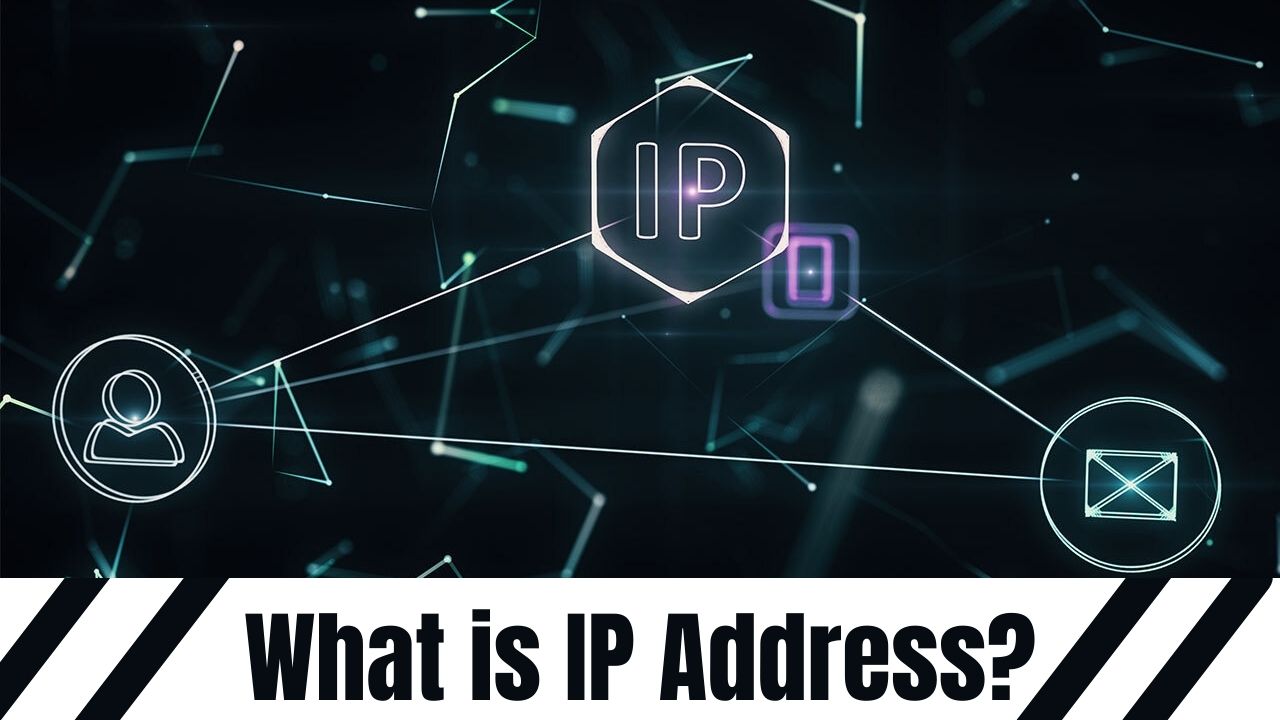
IP Address stands for Internet Protocol Address. An IP Address is a string of numbers assigned to computers, routers, servers, pretty much anything connected to the internet which helps to communicate between two devices connected with internet. In order to make it easy ICT BYTE defines IP Address as “The virtual address of your location which is in the form of numbers“.
For example if you are using the internet from Kathmandu, Nepal then the IP Address will showned something like 110.44.119.151. Every device has the unique IP Address.
Types of IP Address
According to the working mechanism the IP Address is classified into two different types.
Physical Address

If you came to Kathmandu city (The Capital of Nepal) and ask to public that you want to meet with Prince Pudasaini then people don’t know about whom are you talking about. May be there’s thousand person in Nepal whose name is Prince Pudasaini.
The address which can be stored in Memory unit is known as Physical address. In memory also there are completely different files with similar names. If you only enter the name not a full location then how will the programs executes and give your desired result so Physical address is the representative address.
Including Term
- Mac Address: It has 48 Bits
Logical Address
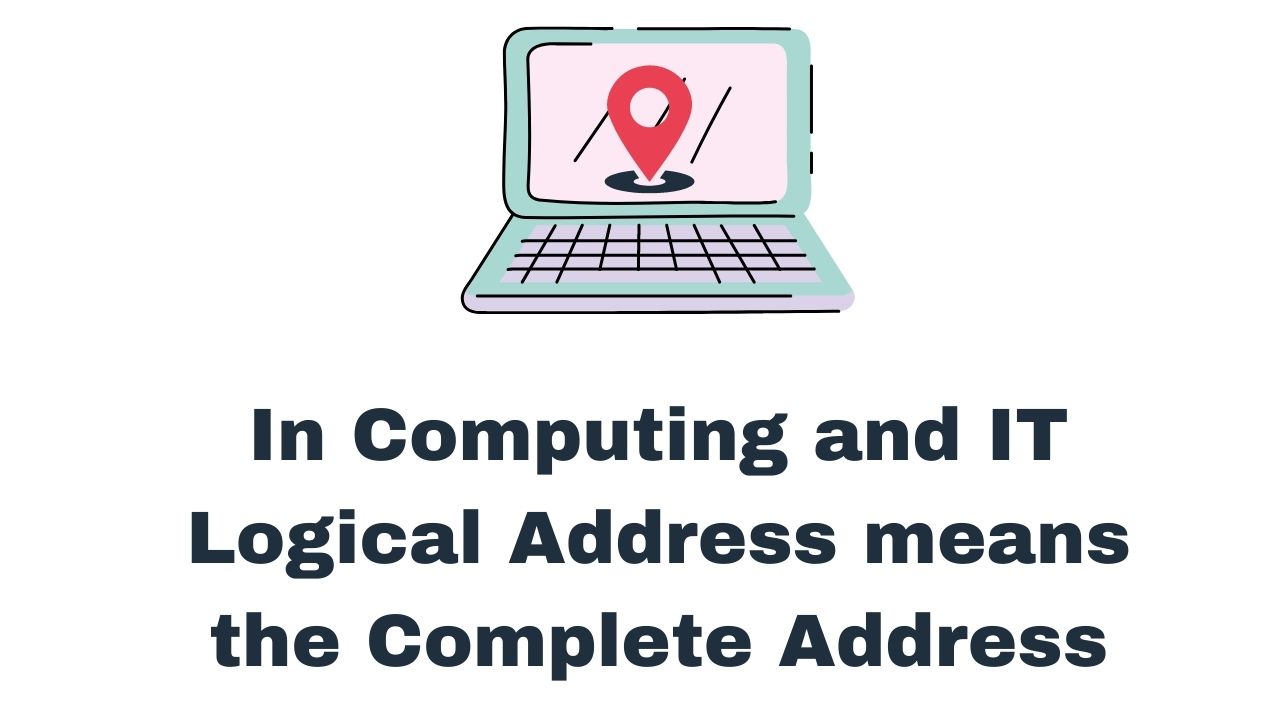
If you came to Kathmandu and asked the Public to take me to Belkotgadhi-8, Nuwakot then the public take you to that place. The Belkotgadhi-8, Nuwakot is the complete location. There is only one municipality in Nepal with the name of Belkotgadhi in all over Nepal. So if any person not know this place then another person will know that place.
The addressing which gives you complete location of something is known as Logical Address. If you know complete location of the file then your computer can get that file easily while running a program.
Including Terms
- IPv4: IPv4 also has two more class. Which are mentioned below:
- Public IP
- Private IP
- IPv6
Now we are going to show you the most important concepts of IP Address. Take up your pen and pad to points out some of the important and highlighted things which further comes in this article.
IPv4
IPv4 address is 32 bits logical Address. Under the 32 bits it has 4 octet. In each octet there will be the among 0 to 255 maximum and minimum value. The IPv4 is made with the combination of two ID that are Network ID and Host ID.
For example I have one IP Address below
| 192 | 168 | 39 | 240 |
IPv4 is always written in this way. they are written in 4 octets. Each octet has 8 bits. If we add all the beats of the total 4 octet then the octet will be 32-bits. Always the IPv4 Address will be written in 4 octet, if you mistakenly write only 3 octet then that will be error. The numbers in the table like 192, 168, 39, 240 is written in decimal but we have to convert the bits in binary later.
One more things you need to keep in mind is that if you give the value of more than 255 then you will get error because the maximum value for IPv4 is 255.
Classes of IPv4
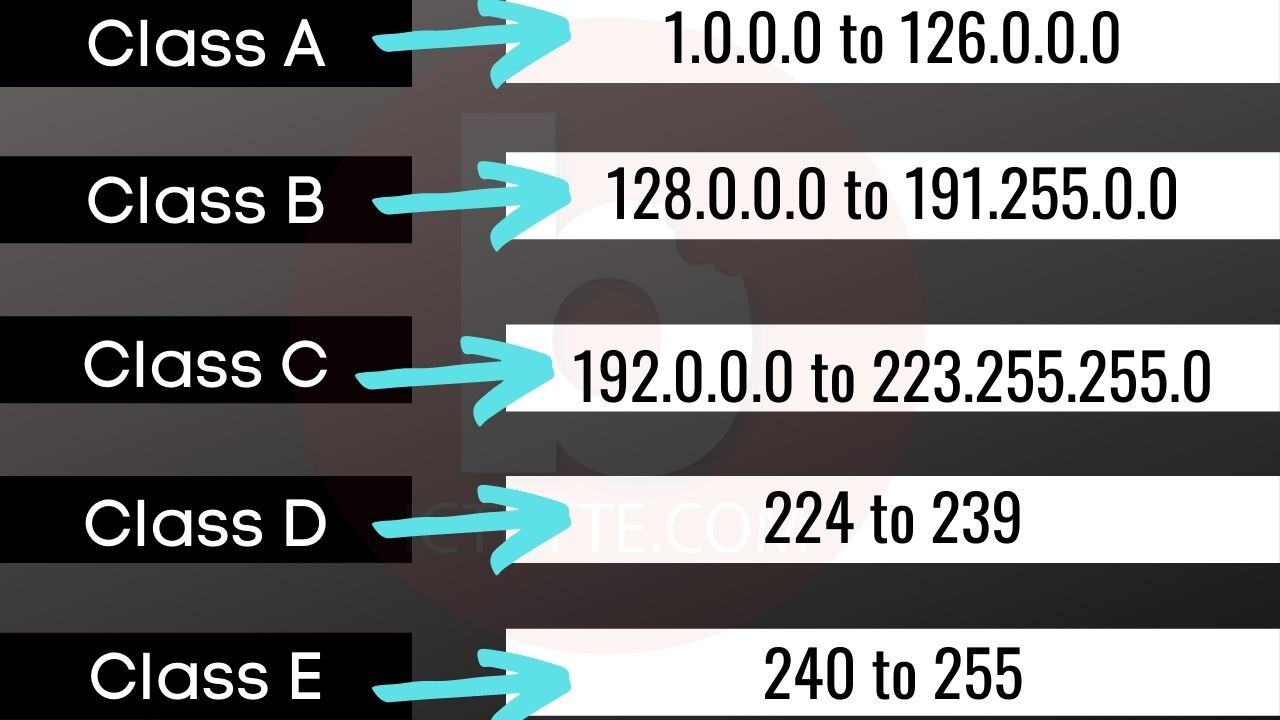
- Class A
- Starts from 1.0.0.0 and Ends in 126.0.0.0
- Used to make large network.
- Class B
- Starts from 128.0.0.0 and Ends in 191.255.0.0
- Class C
- Starts from 192.0.0.0 and Ends in 223.255.255.0
- Used to make small network.
- Class D
- Starts from 224 and Ends in 239
- Used for Multitask.
- Class E
- Starts from 240 and Ends in 255
- Used for special Research.
Generally Class A, B and C are used to IP addressing. Yes but for the special purpose Class D and Class E are also used in a rare case.
Loop-back Address
So, Look at the above class allocation again. did you see the value 127. where is 127 ???? 127 is the Loop-back address which is reserved for the special purpose. unlike class D and class E 127 value is also considered as the special purpose address so the allocation is not included in the above table. Not only 127 value is reserved but 127.0.0.0 (full range) is reserved.
If your NIC (Network Interface of Card) is not connecting to the internet or if you are trying to connect your computer in a internet network but your computer is not getting the network then you can check that whether your computer have a problem of connection (i.e hardware or software) with the use of the Loop-Back Address.
Steps to check NIC issue
- Go to command prompt.
- Type ping and type 127.0.0.1
- If the response is coming from the cmd then your NIC is good but the network is not coming and if any replies is not coming from cmd then the problem is in your NIC.
Recognizing IP Address Class
So, we are cleared about the IPv4 Addressing foundation concept, Classes of IP Address and Loop-Back Address. Now, we need to know how to recognize that the IP address is belongs to which Class. For the clarity we’ve compiled the IP address recognizing process practically with example.
Suppose we have an IP address 137.20.20.10. So what is the class of this IP Address? So, All you have to do is look at the first octet of the IP Address. In 137.20.20.10 the first octet is 137. And the value of first octet 137 lies in between Class B 128- 191. So this IP Address is belongs to Class B IP address.

Another example is 201.100.10.0 is the IP address of which class? Simply check the first octet. The first octet here is 201. This IP Address is belongs to Class C because the value 201 lies between 192 and 223.
Recognizing Network ID of IP Address
In order to reconize the network ID we must need to know it’s basic things. So, look the table below
Class A
| Reserve for Network | Reserve for Host | Reserve for Host | Reserve for Host |
Class B
| Reserve for Network | Reserve for Network | Reserve for Host | Reserve for Host |
Class C
| Reserve for Network | Reserve for Network | Reserve for Network | Reserve for Host |
One more things you need to keep in mind is that Network bits is represented from 1 and the Host bits is represented from 0.
In the nutshell, for class A first octet is reserved for Network and respectively 3 octet is reserved for Host, for class B first and second octet is reserved for Network and respectively 2 octet is reserved for Host, and for class C first three octet is reserved for Network and one octet is reserved for Host.
Step for Recognizing Network ID
Suppose we have the IP Address of 115.10.0.5.
- First of all look at the class of this IP Address
- 115 is belongs to Class A (1.0.0.0 to 126.0.0.0)
- Now check how many octet is reserved for network in Class A.
- Only one octet is reserved for network in Class A.
- Now we have to find Network ID so, write 115 as it is and make all the three octet 0 respectively.
- Then the Network ID for 115.10.0.5 is 115.0.0.0.
- 115.0.0.0 is Network ID.
Another example, Suppose we have the IP Address of 196.10.10.10. Let’s find out the Network id…
- First of all look at the class of this IP Address
- 196 is belongs to Class C (192.0.0.0 to 223.255.255.0)
- Now check how many octet is reserved for network in Class C.
- Three octet is reserved for network in Class C.
- Now we have to find Network ID so, write 196.10.10 as it is and make remaining one octet 0.
- Then the Network ID for 196.10.10.10 is 196.10.10.0.
- 196.10.10.0 is Network ID.
Now one task is for you Suppose you have the IP Address of 150.10.10.100. Now do this yourself.
Recognizing Subnet Mask
We are planning to make the article of Subnetting in a few days. We think more than 50-60 percent of our audience don’t know how to find out Subnet Mask. So we are nog going to understand in avery easy way about how we can find subnet mask.
Suppose you are given a IP Address of 115.10.10.20 and asked for it’s subnet mask then how could you find out that. so let’s jump towards it..

- First of all check the Class of 115.10.10.20.
- 115 belongs to Class A (1.0.0.0 to 126.0.0.0).
- Now check how many octet is reserved for network in Class A.
- Only one octet is reserved for network in Class A. One octet contains 8 bits.
- Remember that we’ve already said that Network bit is represented by value 1 and the host bit represented by value 0.
- Now, You have to keep in mind is that 8 bits is reserved for Network in Class A.
- So representing Network bit from 1 then it will be 11111111.
- Step No. 7’s 11111111 is 8 bits.
- Write the host beats as it is like 00000000, 00000000, 00000000.
- Altogether Class A looks likes this 11111111 00000000 00000000 00000000.
- Most important things is keep in mind that 11111111 is representing Network bit and other 24 zeros (0) is representing Host bit.
- When you calculate the decimal of network bit of class A then It will be 255. and remaining host bits will be respectively 0,0, and 0.
- Now the Subnet Mask of Class A will be 255.0.0.0.
Do you understand? Mention not we will do another example also so you will be clear.
Suppose we have the IP Address of 160.10.20.10. For more clarity we can give you img of Classes.

- First of all check the Class of 160.10.20.10.
- 160 belongs to Class B (128.0.0.0 to 191.255.0.0).
- Now check how many octet is reserved for network in Class B.
- Two octet is reserved for network in Class B. One octet contains 8 bits.
- Remember that we’ve already said that Network bit is represented by value 1 and the host bit represented by value 0.
- Now, You have to keep in mind is that 16 bits is reserved for Network in Class B.
- So representing Network bit from 1 then it will be 11111111, 11111111.
- Write the host beats as it is like 00000000, 00000000.
- Altogether Class B looks likes this 11111111 11111111 00000000 00000000.
- Most important things is keep in mind that 11111111, 11111111 is representing Network bit and other 16 zeros (0) is representing Host bit.
- When you calculate the decimal of network bit of class A then It will be 255, 255 and remaining host bits will be respectively 0, and 0.
- Now the Subnet Mask of Class A will be 255.255.0.0.
Now at the conclusion of Subnet Mask, if you are given any IP address and asked to recognize the Subnet Mask then all you have to check is that you have to check the class of the given IP Address and then you need to verify the Network ID and Host ID of that IP address.
Then you will know how many octet of the Class contains Network bits and Host Bits then you need to represent the bits of Network ID by 1 and Host ID by 0. then you can change the 8 bits of network id as 255 and let the host id as it is as 0. then the conclusing answer will be the Subnet Mask.
Converting the IP Address into Binary
Now All you have to know is how to convert the 32 bits IP Address to Binary. In IPV4 addressing the most important things you need to know is how to convert the IPv4 into binary. So let’s get Started…
Suppose we are given the IP Address of 192.168.37.200 ans asked to convert this IP Address into Binary. Don’t think that it is tough to find out the binary of IP Address. Just look the below mentioned process carefully…
- Remember that each octet contains 8 bits.
- The maximum value of 1 bit becomes 255. You’ve just seen in the subnet mask session that if all the bits of 1 is converted into binary then it becomes 255.
- You have to write down a simple value first 128, 64, 32, 16, 8, 4, 2, 1.
- Always write this 128, 64, 32, 16, 8, 4, 2, 1 value because it decide the binary of the IPv4.
- The proper method to convert into binary is in the image below.
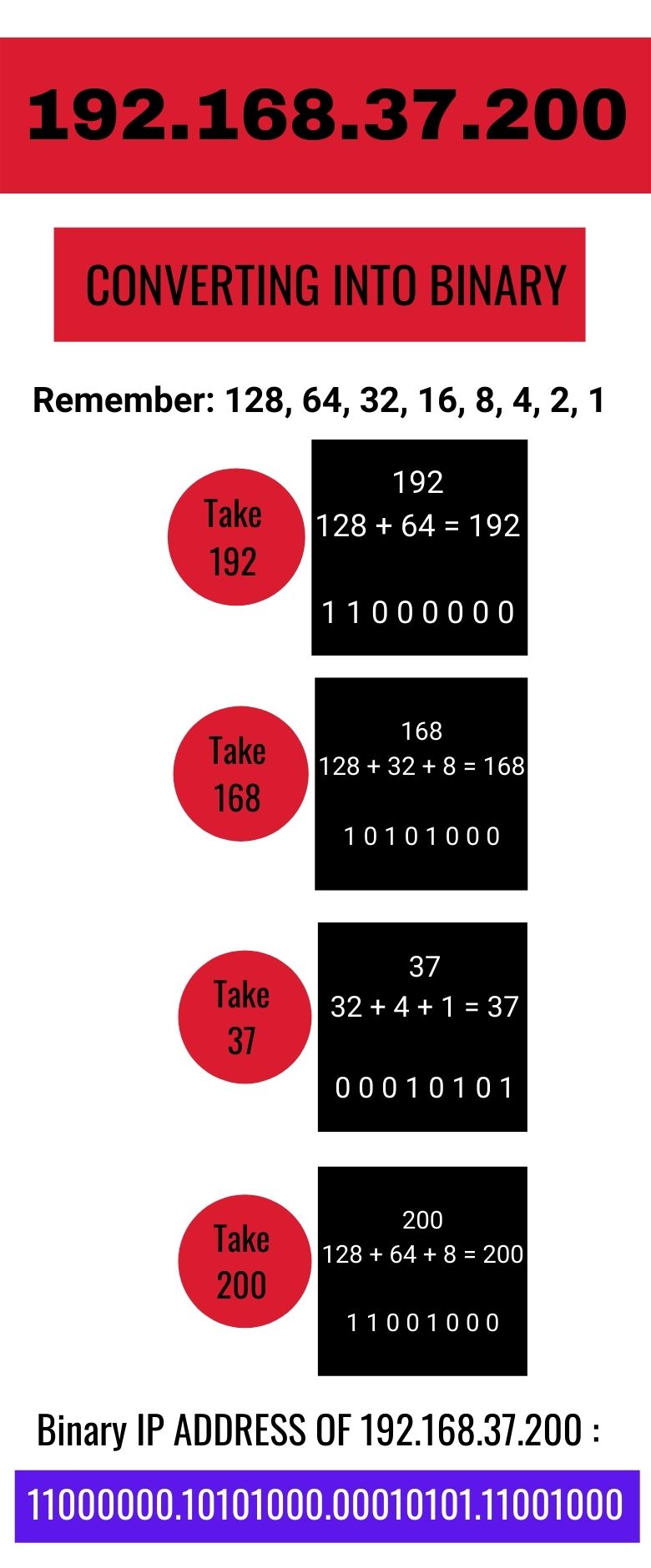
So, you’ve understand the Basic of the IP Address now you can move further. Now we are going to show a small demo about how you can trace location by using IP Address.
Reminder: This is only for Educational Purpose. If you use this article with the other Intention then you will be responsible for the accident. “Trace Location Using IP Address“
Is is possible to trace the exact location of the person Using IP Address?
No, Not at all you don’t know the exact point of the person while tracing from the IP Address. But yes, you can know in which region and which are is the user/victim is.
What are the information we can gather from IP Address?
You can gather the geolocation and the ISP (Internet Service Provider Location) using IP Address.
Steps to Trace Location By Using IP Address
Now we are going to trace IP Address of facebook.com
#1 First of all type windows + R then type cmd in the box and press enter.
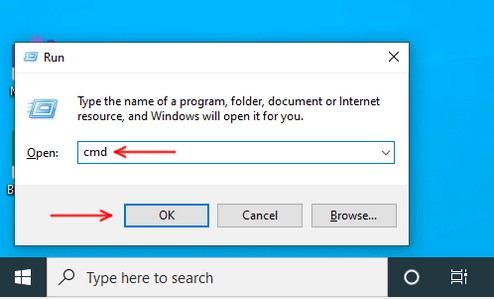
#2 Then type “ping” followed by website like facebook.com

#3 Now run the “tracert” command on IP Address.

#4 Put These IPs Into an IP Lookup Tool like What Is My IP Address which let you search for the approximate location of any IP address.

Now you can get the location of the IP Address. For the deep trace we need to know what is IPv6. In another Article you you going to know all about IPv6 IP Addressing. Stay Tuned!
We hope this post help you to know What is an IP Addressing? Can I Trace Location By Using IP Address. If any queries arise regarding this topic then ICT BYTE recommend you to comment below. Here, we are always active to help you so don’t hesitate to share your doubt.
Keep up with ICT BYTE by downloading the ICT BYTE app for Android , and follow us on Facebook for late-breaking coverage.




